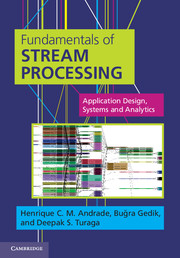Foreword
Published online by Cambridge University Press: 05 March 2014
Summary
Humans are deeply curious and expend boundless energy and thought in sensing and interpreting that which surrounds them. Over time, direct perception through the five physical senses was extended by the creation of ingenious instrumentation designed to magnify and amplify weak signals, bringing what was beyond the visible into focus. Telescopes and light microscopy revealed natural phenomena that enabled richer and more sophisticated theories and understanding.
In recent decades industrialization has filled the world with machines and complex systems that manufacture, transport, track and deliver, communicate and mediate financial and social transactions, entertain and educate, treat and repair, and perform thousands of other tasks. As was true with the natural world, human curiosity seeks to understand the operation of these machines and systems and their interactions, but now with the added urgency to understand how and how well systems are operating, and often why they are not working as intended. Direct perception is no longer effective, nor is observation through the mere amplification of our five senses. Specialized sensors capture phenomena such as vibration, frequency, complex movements, or human-generated data and messages produced by the machines and systems as a side-effect of their operation, and so perception must now be through computer-aided interpretation of the digital signals.
Up until recently, no systematic approach existed for the creation of digital signal interpretation required to engineer this new class of perception mechanisms.
- Type
- Chapter
- Information
- Fundamentals of Stream ProcessingApplication Design, Systems, and Analytics, pp. xix - xxPublisher: Cambridge University PressPrint publication year: 2014



